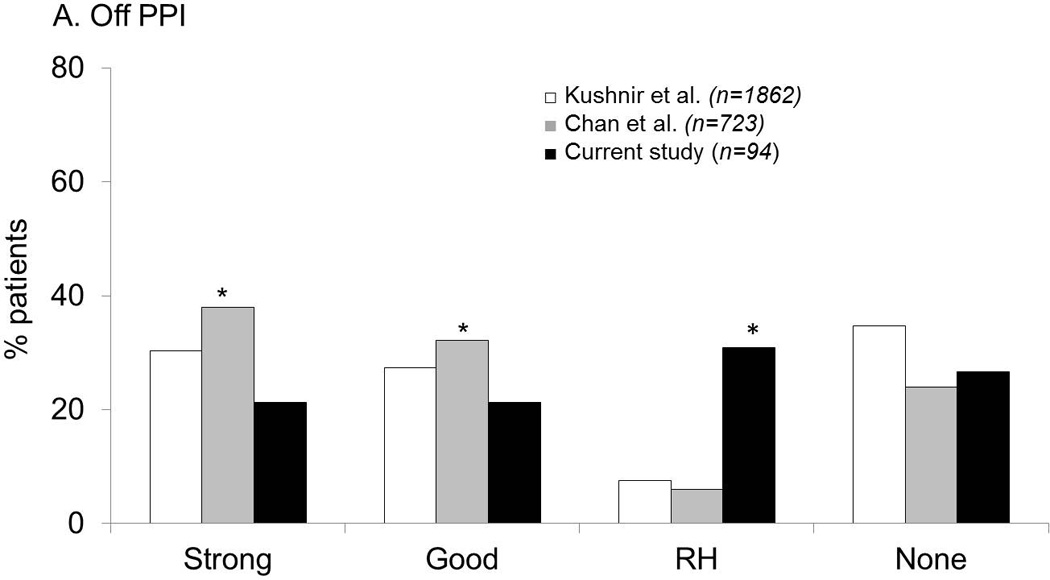Figure 2.


Comparison of GERD evidence phenotypes between the current study (using pH-impedance monitoring) and two institutional historical cohorts using pH monitoring. A. Off PPI therapy. The likelihood of strong and good reflux evidence was highest with pH monitoring performed in patients referred for antireflux surgery, while proportions with RH were highest in the current study utilizing pH-impedance monitoring. B. On PPI therapy. Proportions with abnormal acid exposure were low in all cohorts. Once again, proportion of patients with RH was highest in the current cohort (using pH-impedance monitoring) in contrast to comparison cohorts with pH monitoring alone.
